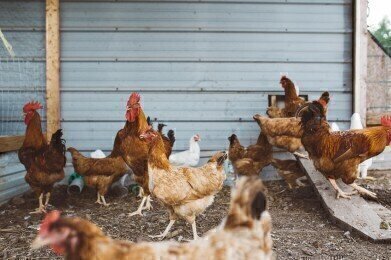Air Monitoring
Monitoring CO2 Concentrations in Pig and Poultry Processing
Sep 12 2018
Over recent years, there has been increasing concern for raising welfare standards in meat processing. This covers not just the animal’s environment and diet but also the procedures used in the slaughtering process.
To ensure that an animal is insensitive to pain while being slaughtered, a European Union directive requires that all animals are stunned prior to slaughter. There is one exception for animals killed at slaughterhouses in a manner in keeping with religious rites. Several methods can be used to render the animal unconscious, including electrical stunning, mechanical stunning or through the use of gas.
Gas stunning involves using an environment with a high carbon dioxide (CO2) concentration to cause the animal to become unconscious. This approach has gained popularity, particularly in Europe, as it can offer a reduced risk of injury during the stunning process as there is no need to restrain the animals beforehand, which can also improve the quality of the meat, and is generally considered to be amongst the most humane stunning methods. It can also be used as a way of directly killing the animals.
The slaughter of animals is not just required as part of the meat processing industry but may also be a necessity for farmers as part of livestock culls following the outbreak of highly contagious diseases, such as during the 2001 foot-and-mouth disease outbreak in the UK that resulted in mass culls of millions of livestock. Typically, when livestock culls are enforced to control and eradicate the spread of disease, they are accompanied by restrictions of the movement of livestock, including sending them to slaughterhouses.
Criticality of CO2 concentrations
For gas stunning or slaughter to cause minimal harm to the welfare of the animal, it is crucial to use the correct CO2 concentrations. Insufficient CO2concentrations mean that the livestock remain alert and conscious and if the CO2 concentration is too high relative to the O2 concentration at the beginning of the process, then pigs have been reported to show some signs of distress. Therefore, to protect the welfare of these animals, there are stringent regulations about both the concentration levels of CO2 that must be used, and it is imperative that the environmental monitors used must be capable of reliably and accurately measuring such concentrations.
For herd animals like pigs, several animals are kept together in a chamber where the atmospheric gas mixture is rapidly changed to one suitable for stunning them. A similar approach can be used for poultry and other animals as well. In the UK, the Welfare of Animals (Slaughter or Killing) Regulations 1995 (WASK 95)5 specifically covers the gas mixtures that can be used for these purposes, and states that the carbon dioxide concentration must not exceed 30 %, as well as that devices must be used to measure by volume the maximum concentration, with audible warning systems should concentrations deviate from the legislated limits.
Edinburgh Sensors and Animal Processing
Please click here to explore Edinburgh Sensors real-time gas monitors.
Digital Edition
IET 34.2 March 2024
April 2024
Gas Detection - Biogas batch fermentation system for laboratory use with automatic gas analysis in real time Water/Wastewater - Upcycling sensors for sustainable nature management - Prist...
View all digital editions
Events
Apr 30 2024 Melbourne, Australia
Apr 30 2024 Birmingham, UK
May 03 2024 Seoul, South Korea
May 05 2024 Seville, Spain
May 06 2024 Minneapolis, MN, USA


















